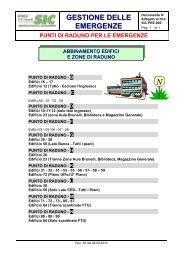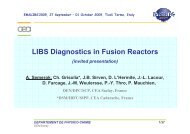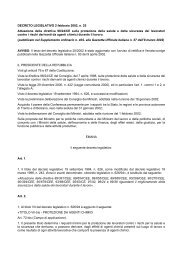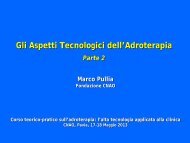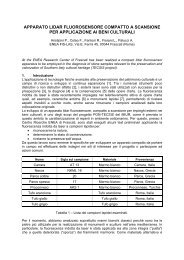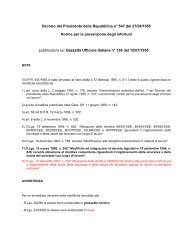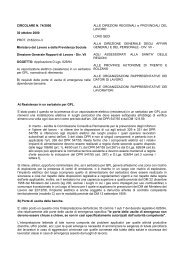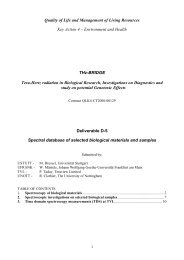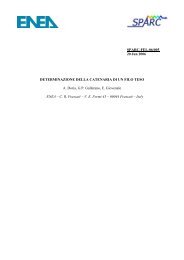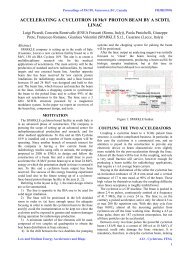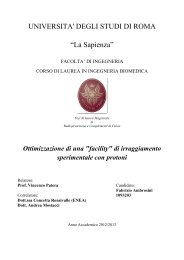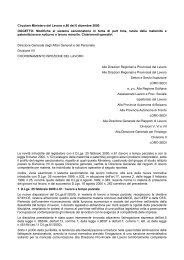Theory, Design and Tests on a Prototype Module of a Compact ...
Theory, Design and Tests on a Prototype Module of a Compact ...
Theory, Design and Tests on a Prototype Module of a Compact ...
You also want an ePaper? Increase the reach of your titles
YUMPU automatically turns print PDFs into web optimized ePapers that Google loves.
46 4. CIRCUIT MODEL<br />
where the matrix elements are defined as follows<br />
t11 = V1<br />
<br />
<br />
<br />
, t12 = V1<br />
<br />
<br />
<br />
<br />
V2 <br />
I2=0<br />
<br />
<br />
<br />
t21 = I1<br />
<br />
V2 <br />
I2=0<br />
, t22 = I1<br />
<br />
<br />
<br />
<br />
I2 <br />
V2=0<br />
I2 <br />
V2=0<br />
The great advantage <strong>of</strong> such a representati<strong>on</strong> is that a chain <strong>of</strong> dispositives<br />
is simply represented by the product <strong>of</strong> the respective transmissi<strong>on</strong><br />
matrices, while others representati<strong>on</strong>, such as resistances <str<strong>on</strong>g>and</str<strong>on</strong>g><br />
c<strong>on</strong>ductances matrices, do not allow this operati<strong>on</strong>.<br />
1.1. Transmissi<strong>on</strong> Matrix for a single cavity. As stated in<br />
the previous chapter, a res<strong>on</strong>ant cavity mode can be represented by the<br />
behavior <strong>of</strong> an equivalent lumped circuit. In this paragraph we deduce<br />
the transmissi<strong>on</strong> matrix <strong>of</strong> such a circuit. It should be better that the<br />
transmissi<strong>on</strong> matrix represent two half cavities magnetically coupled;<br />
this fact simplifies very much the building <strong>of</strong> the model, because it<br />
well represents the tiles composing a LIBO tank, <str<strong>on</strong>g>and</str<strong>on</strong>g> therefore, in the<br />
following, we call this circuit cell. In other words, a cell represents a<br />
tile with two half cavities magnetically coupled.<br />
Figure 4.2. The equivalent circuit for a single cell representing<br />
two magnetically coupled half cavities.<br />
Let us start from the calculati<strong>on</strong> <strong>of</strong> the parameter t11; from the<br />
figure 4.2 it is easy to write<br />
V ′<br />
1 = jω L<br />
2 I1 − jωMI2, V ′<br />
2 = jωMI1 − jω L<br />
V1 =<br />
R<br />
2<br />
+ 1<br />
jω2C<br />
<br />
L<br />
+ jω I1 − jωMI2,<br />
2<br />
where V ′<br />
1 <str<strong>on</strong>g>and</str<strong>on</strong>g> V ′<br />
2 are the voltages <strong>on</strong> the inductances. When I2 = 0 it<br />
is valid that<br />
V2 = V ′<br />
2 = jωMI1 → I1 = V2<br />
jωM ,<br />
,<br />
.<br />
2 I2



